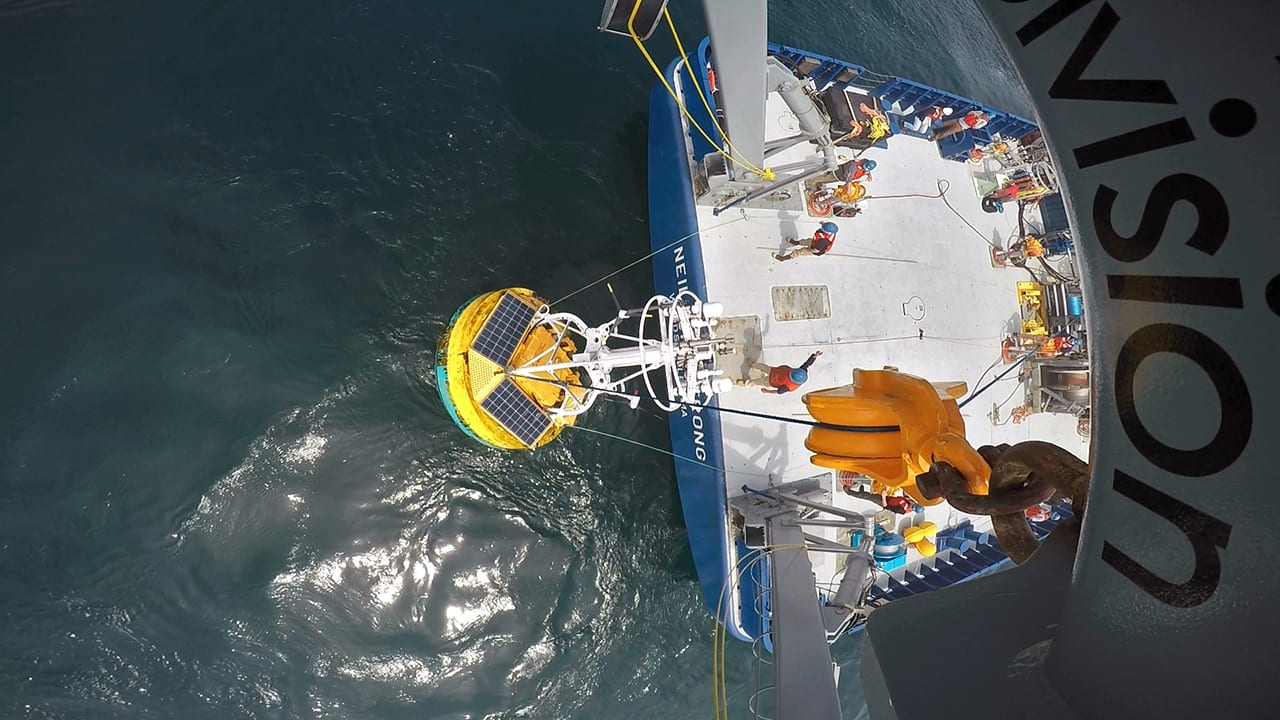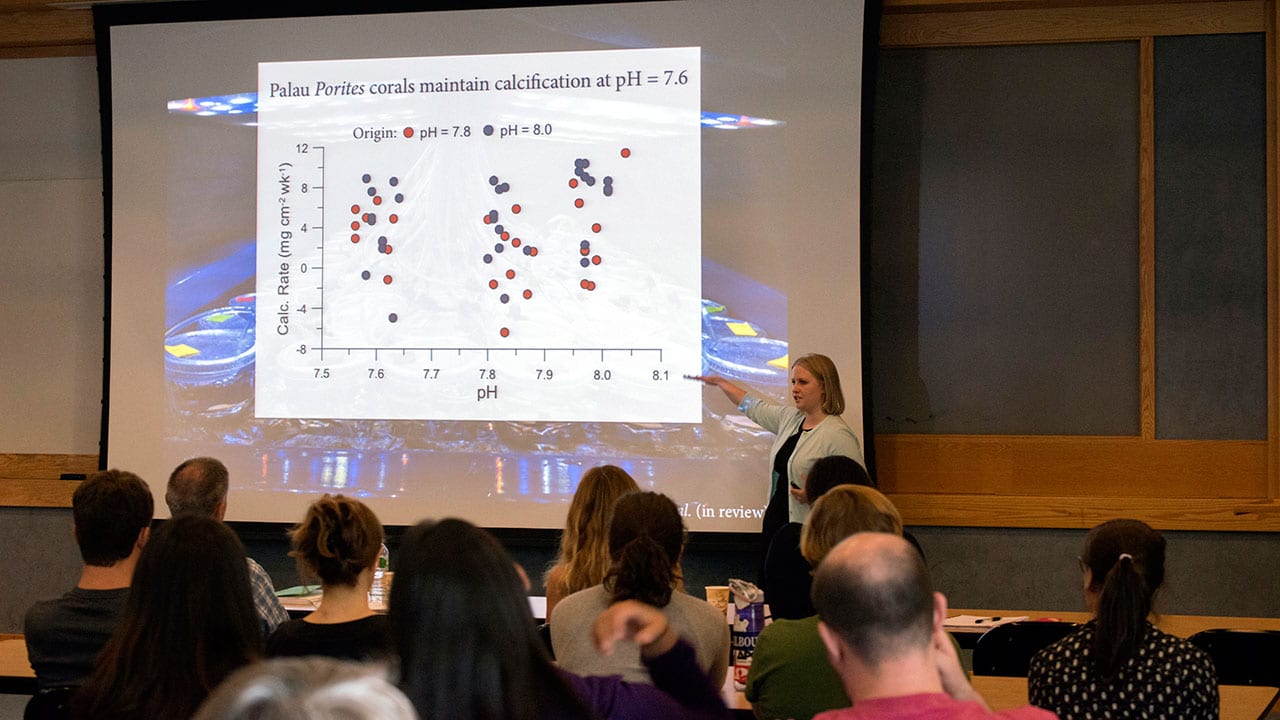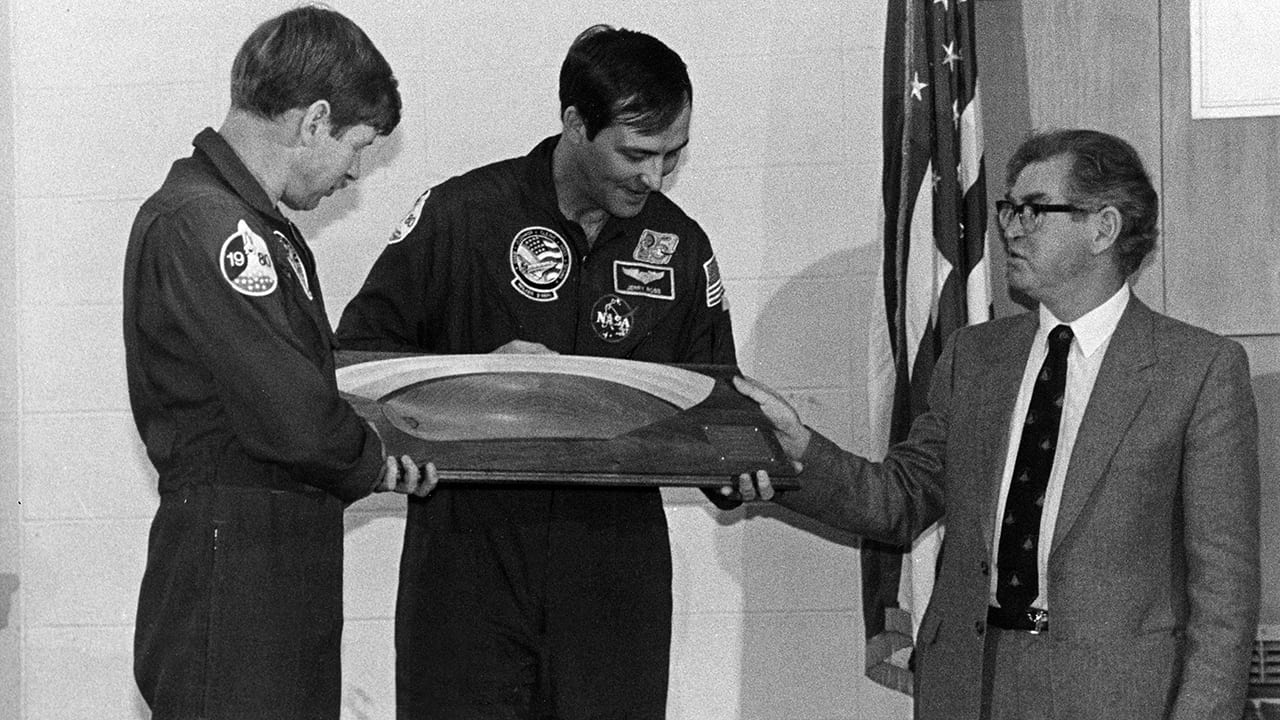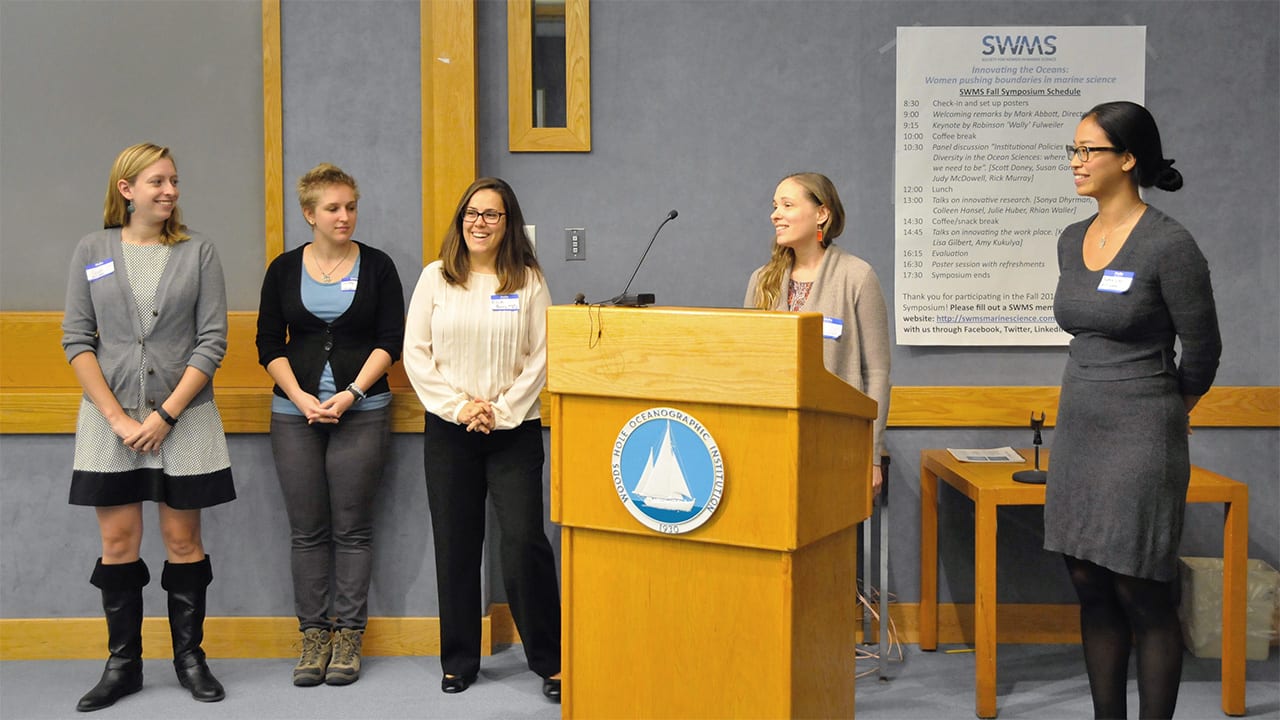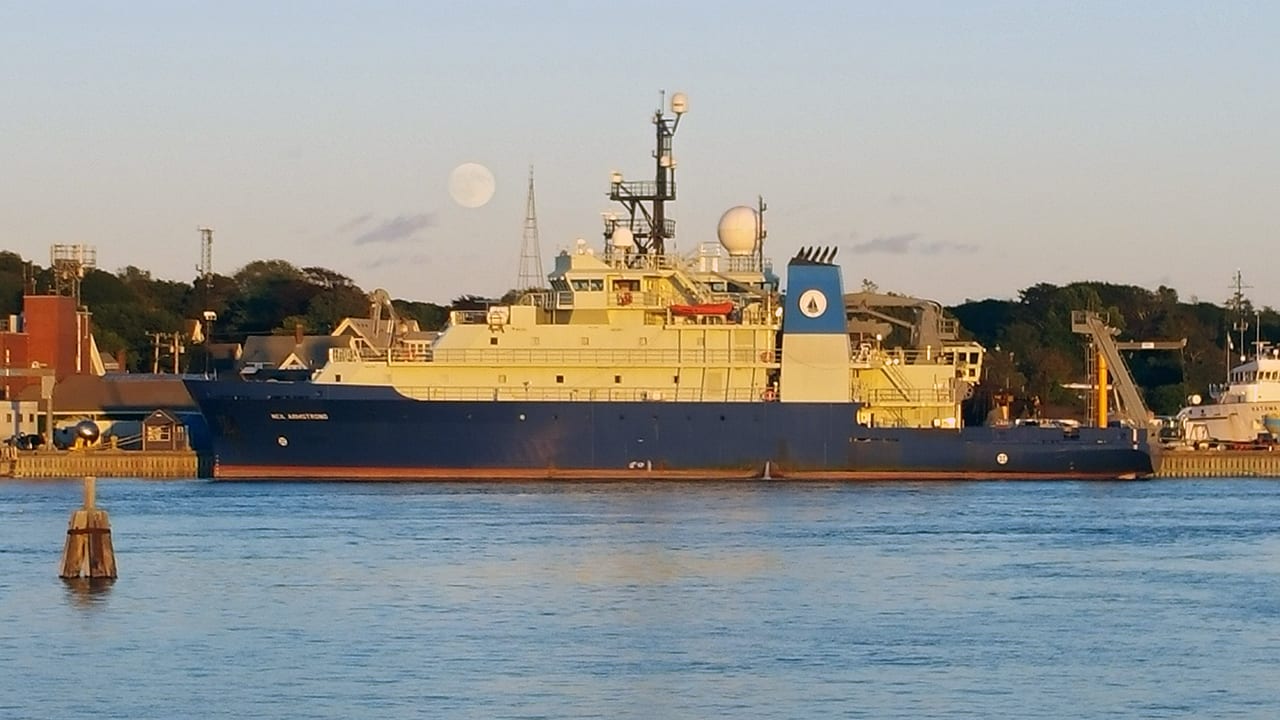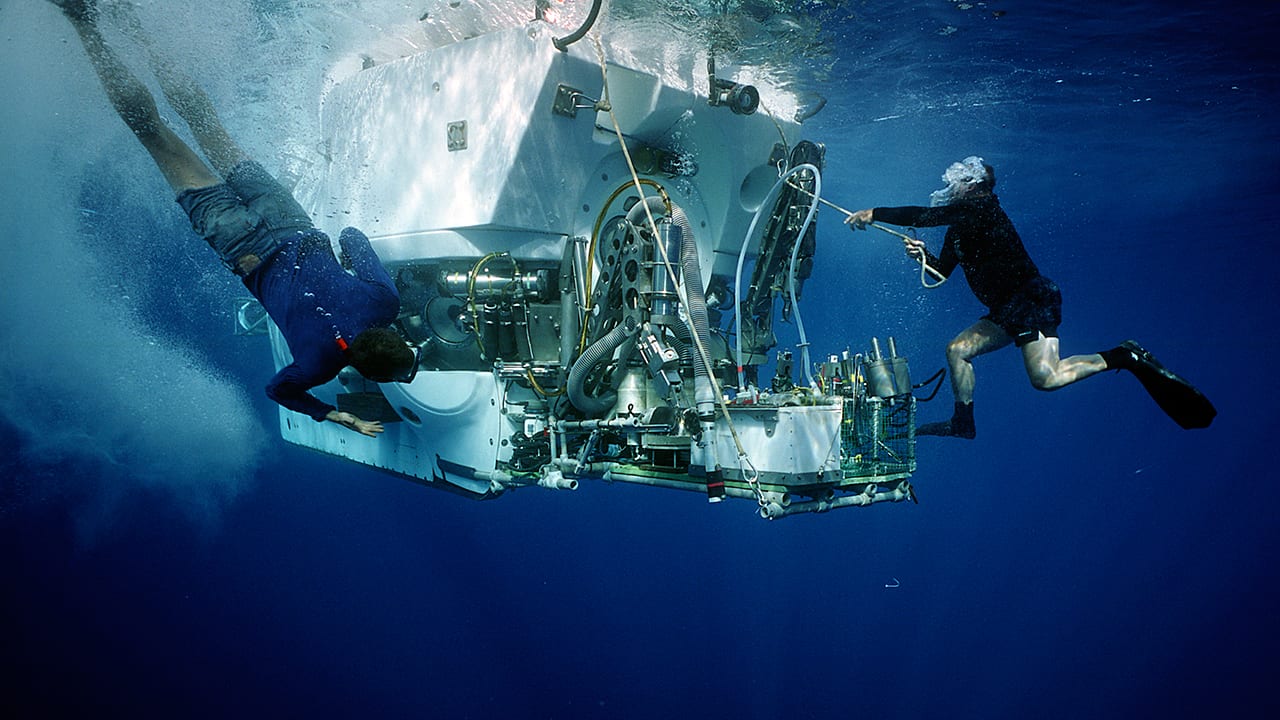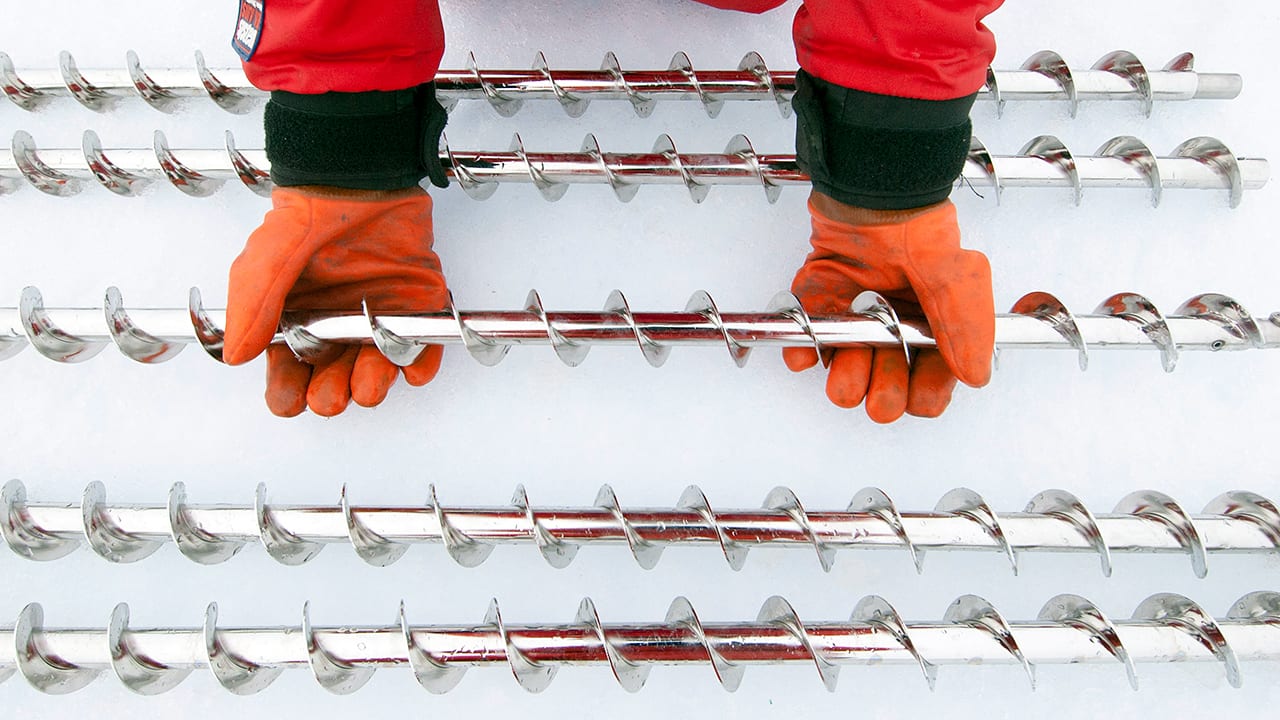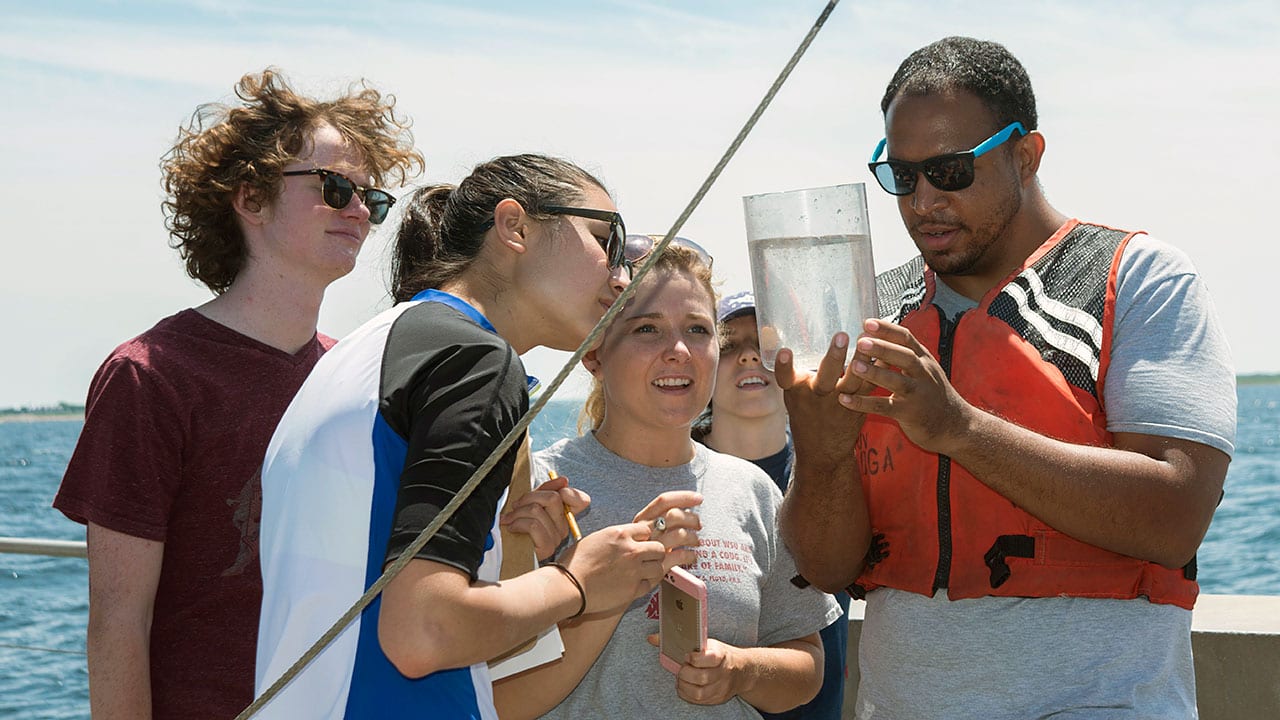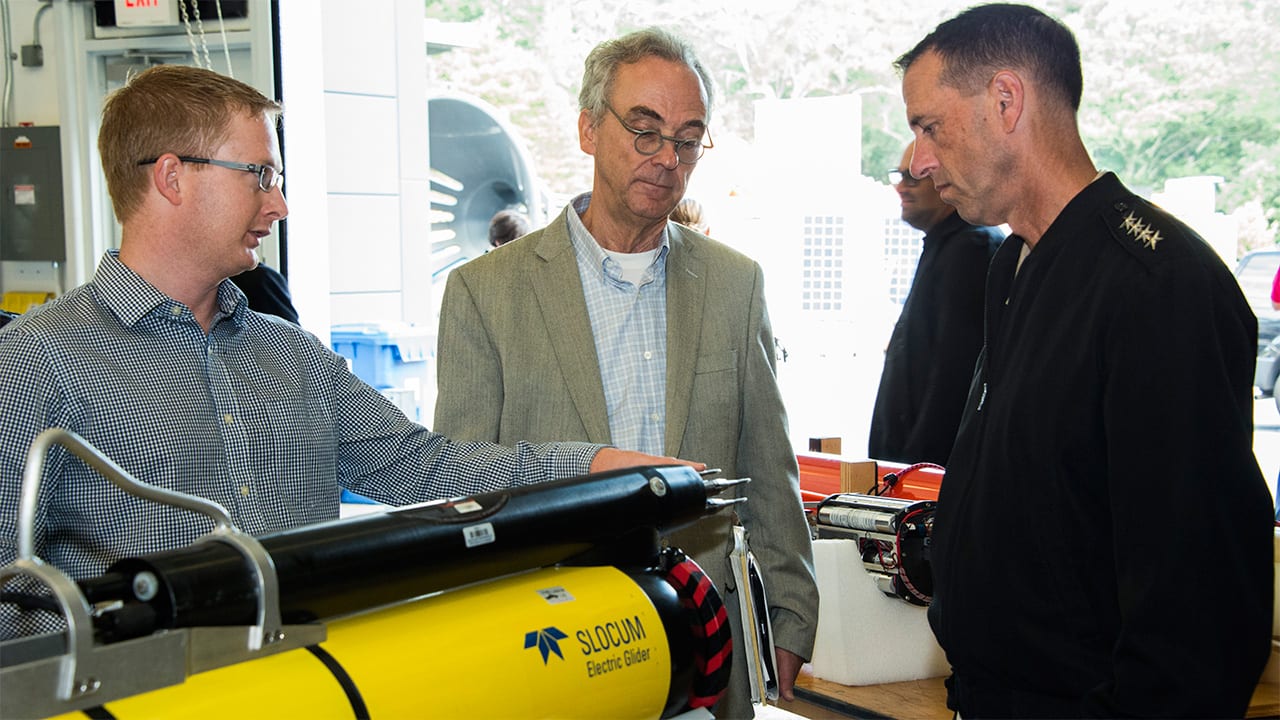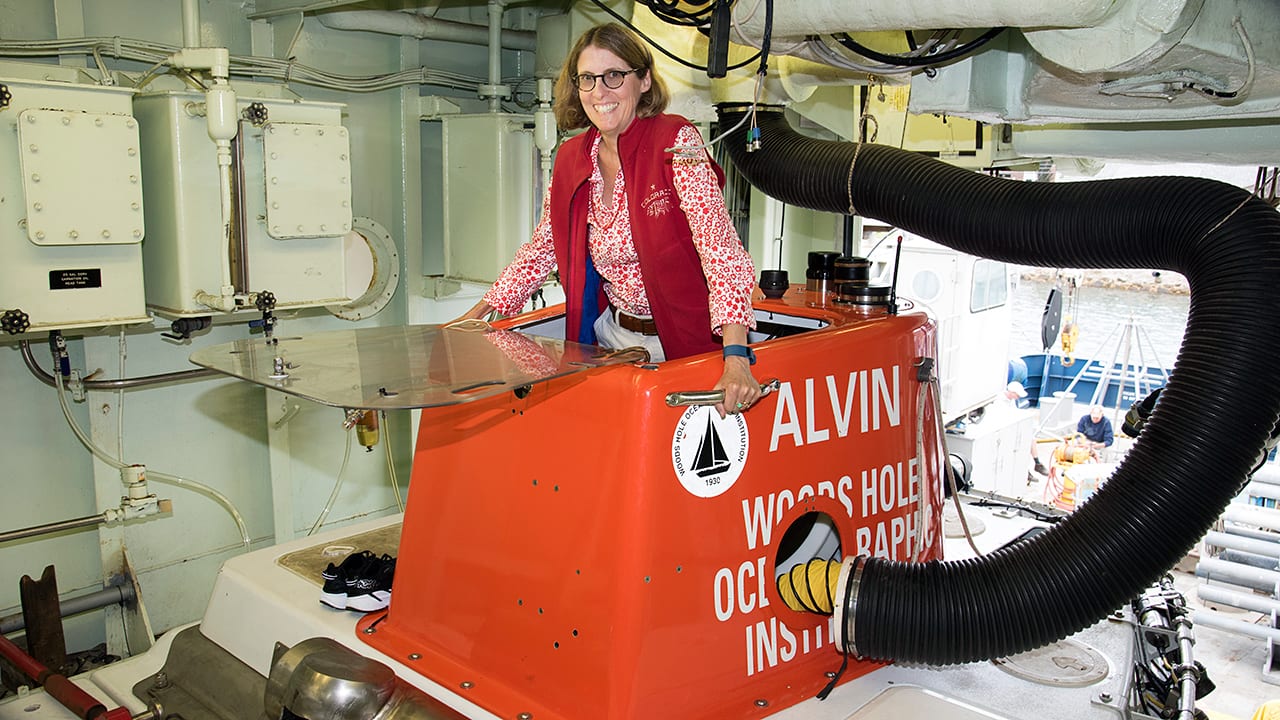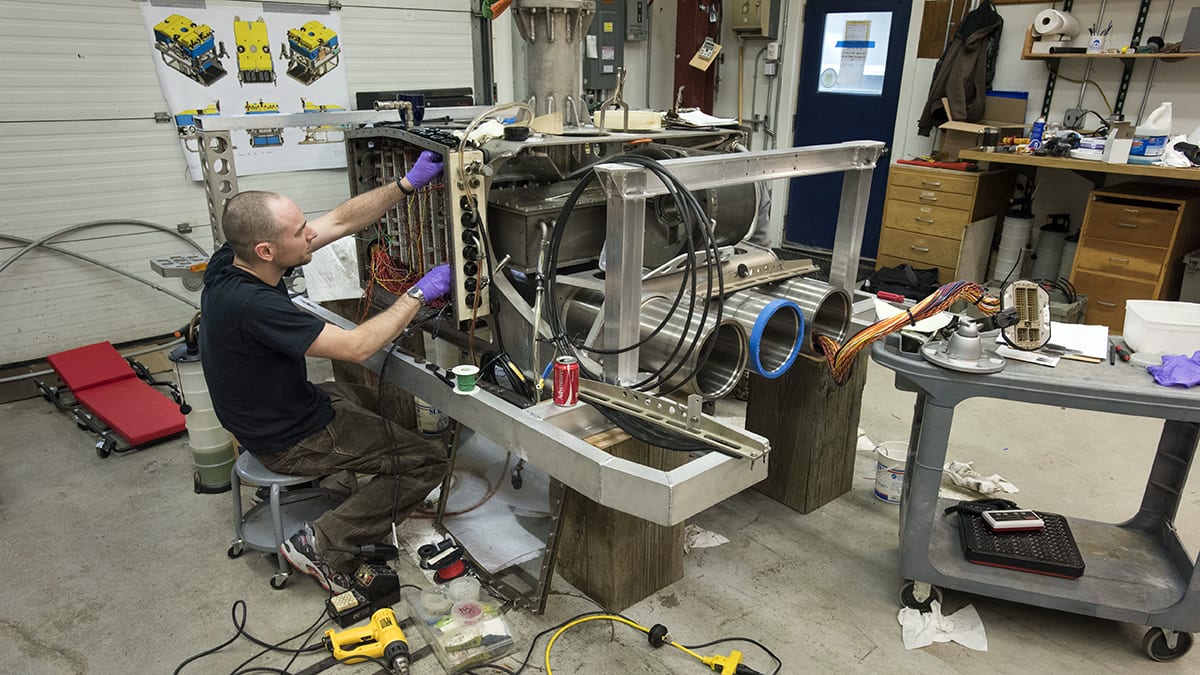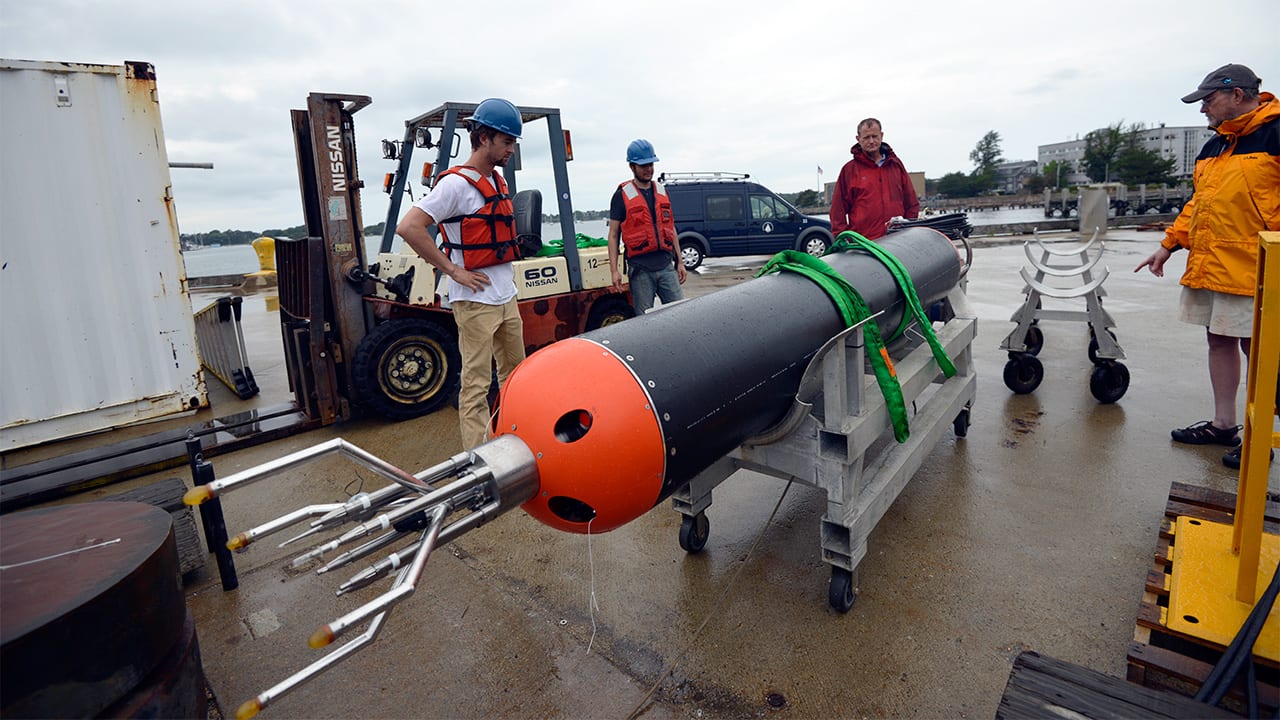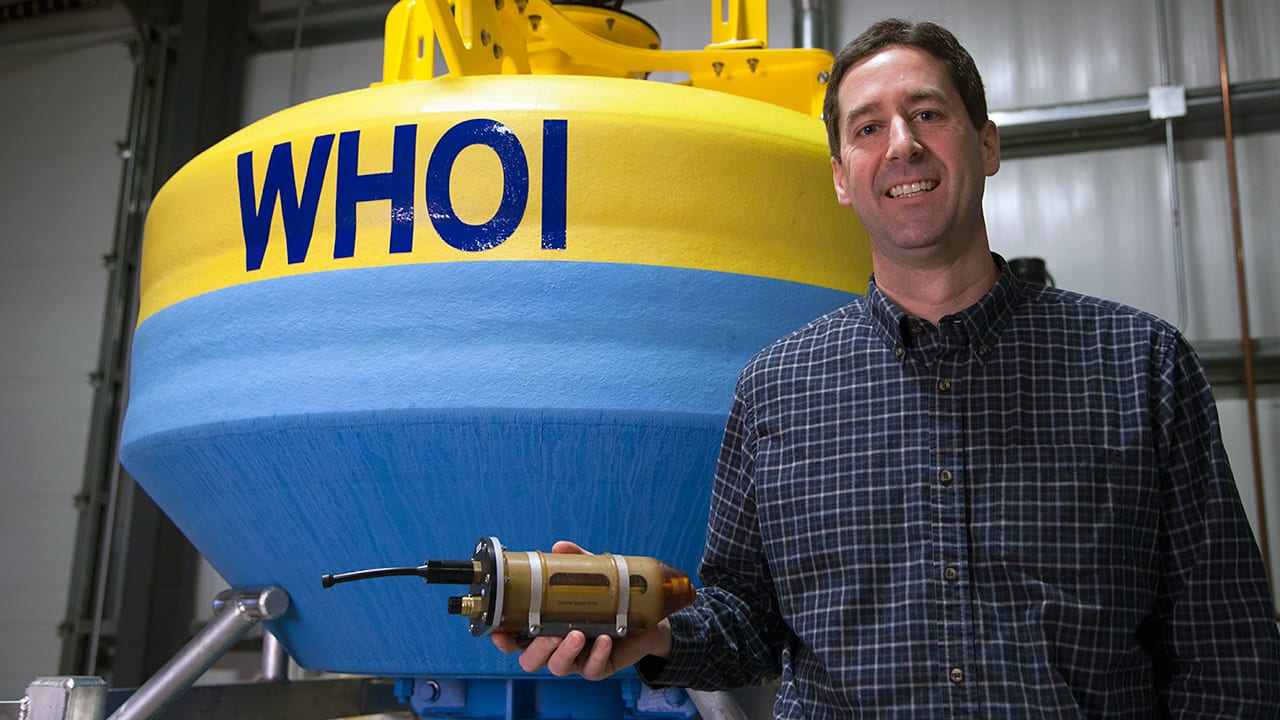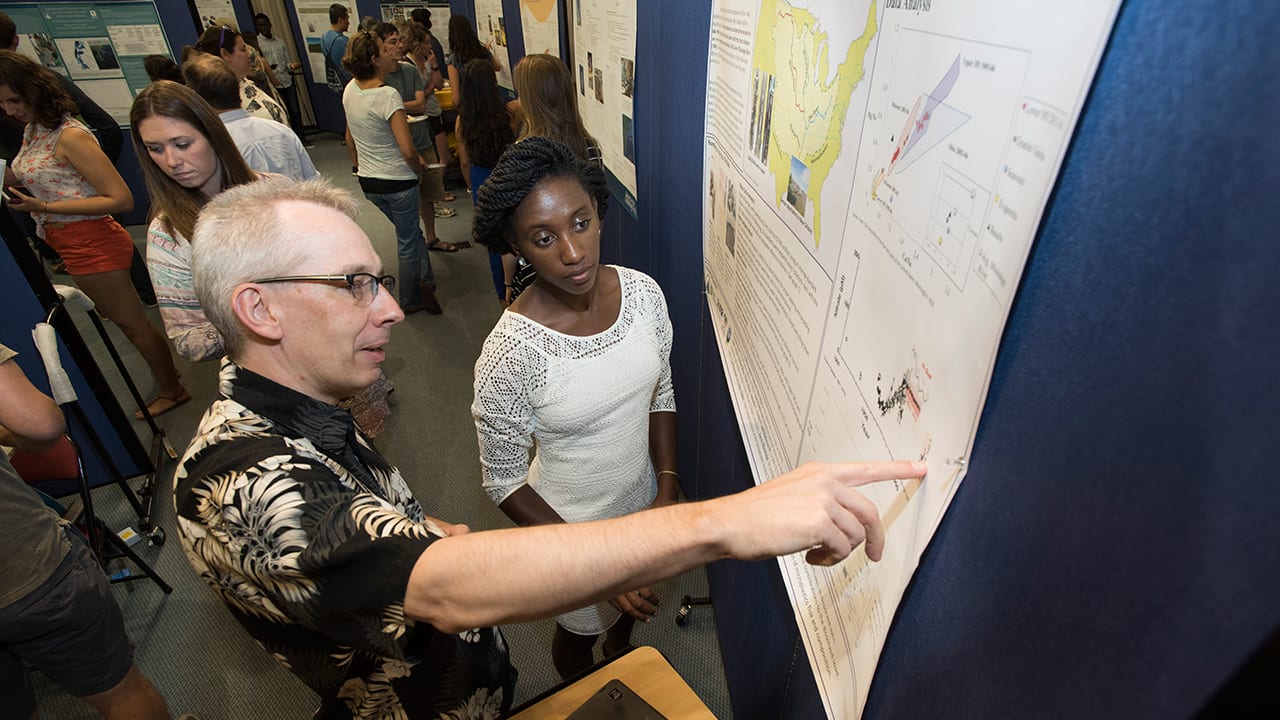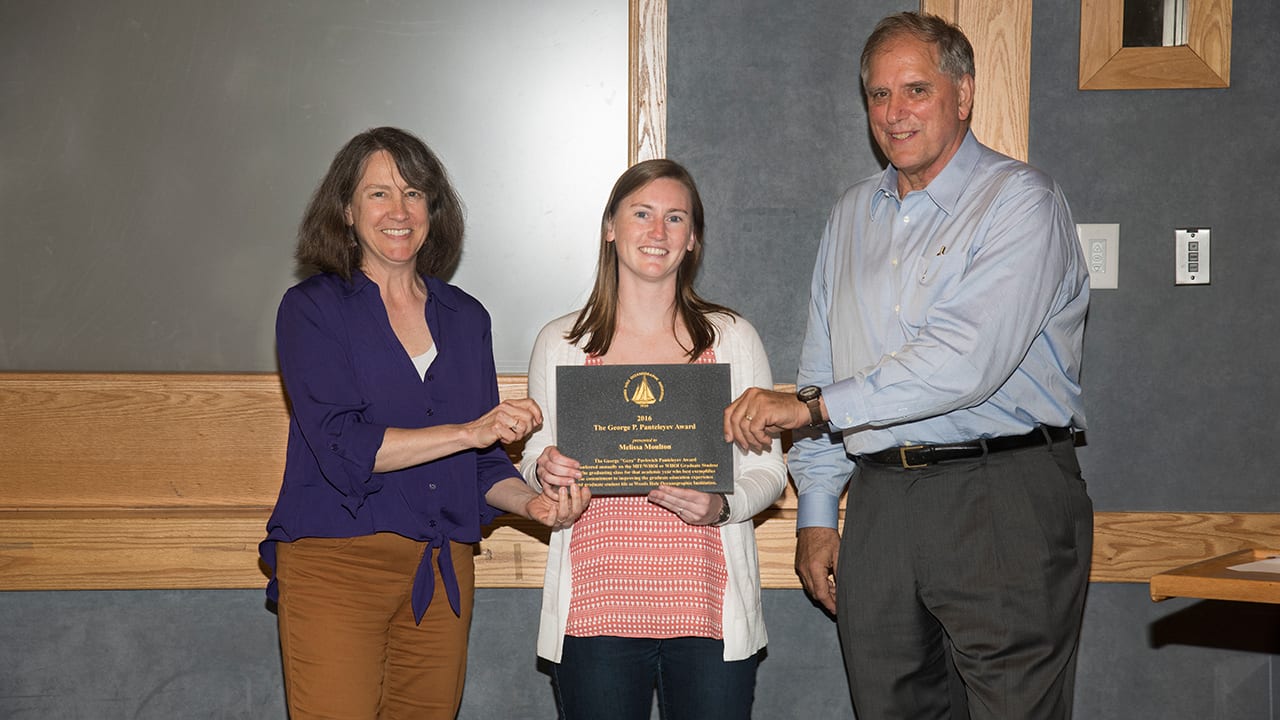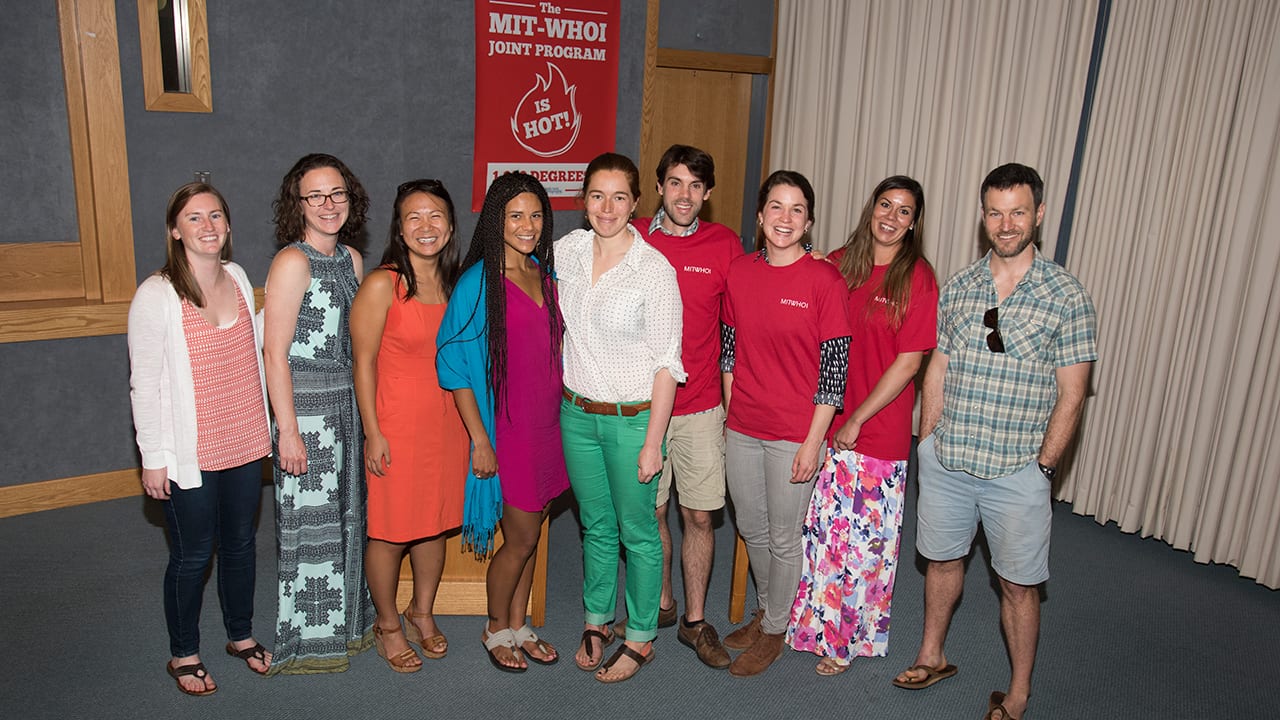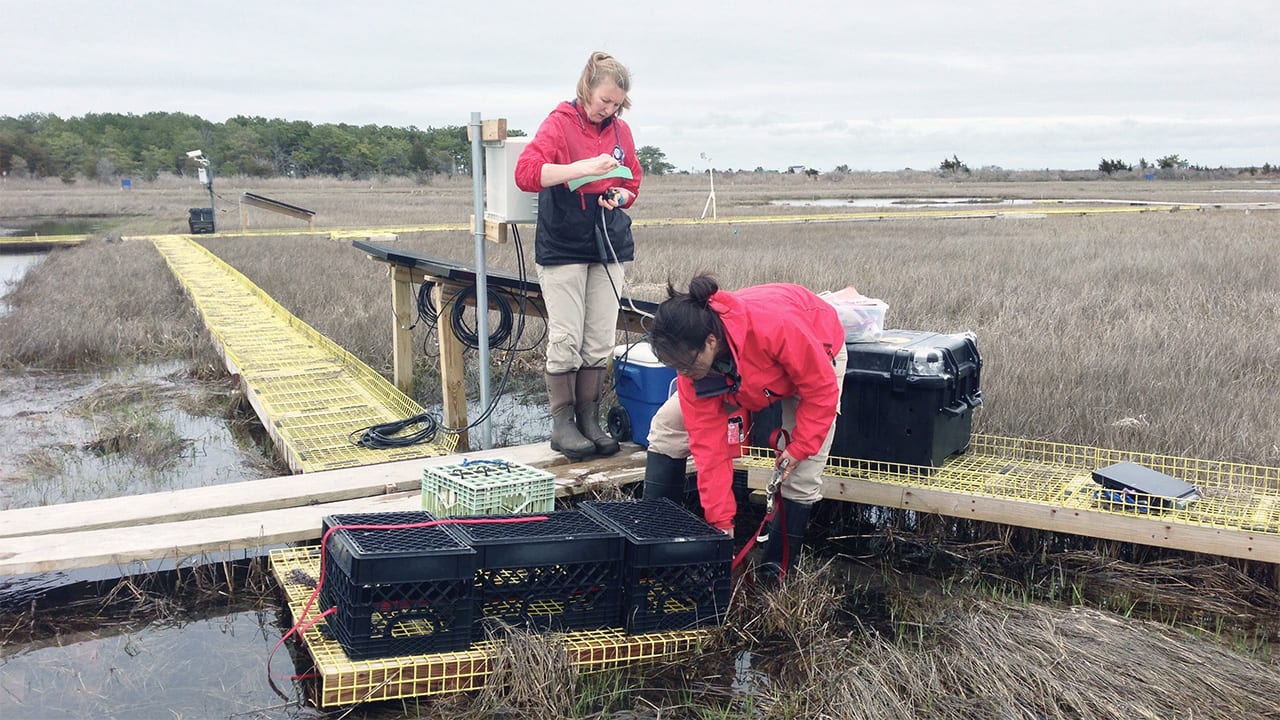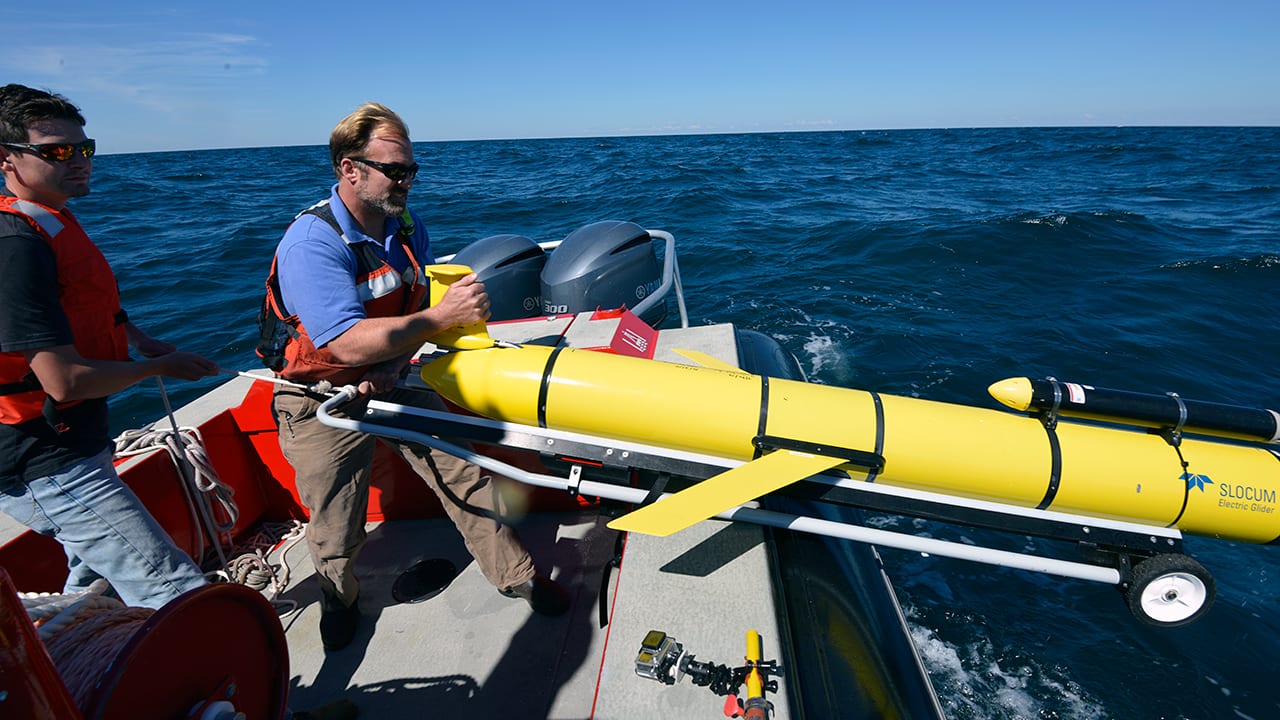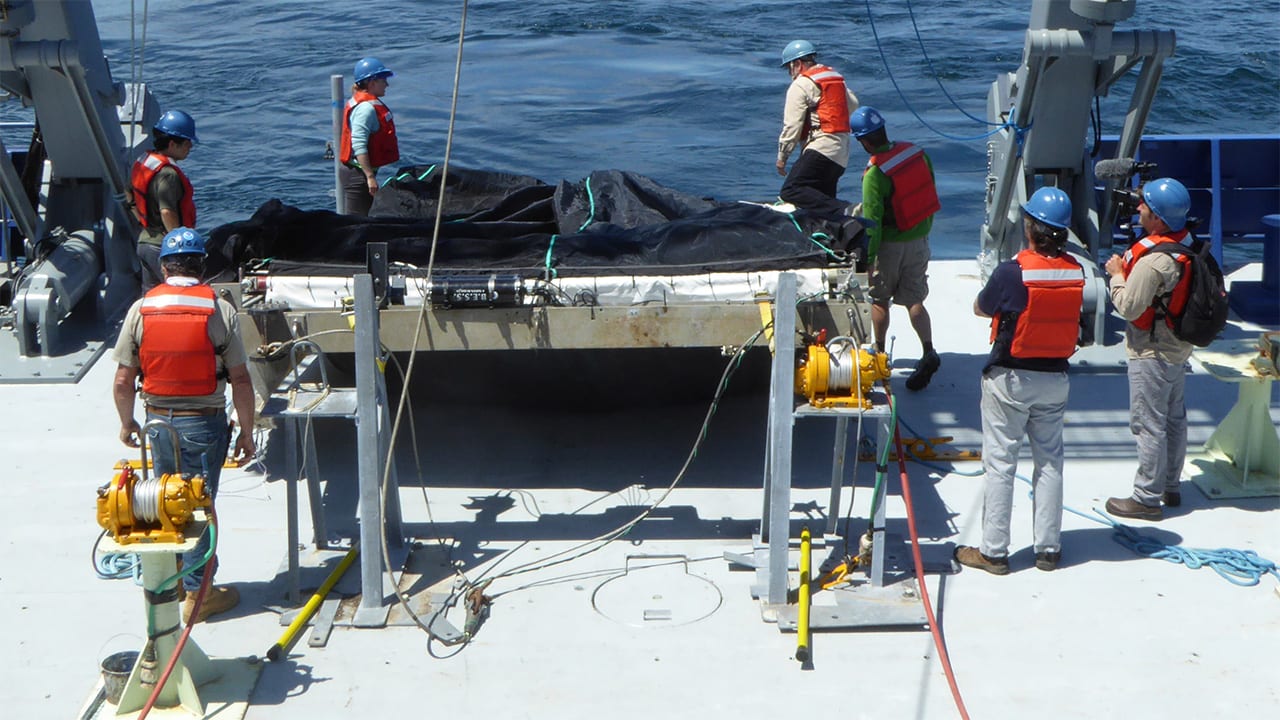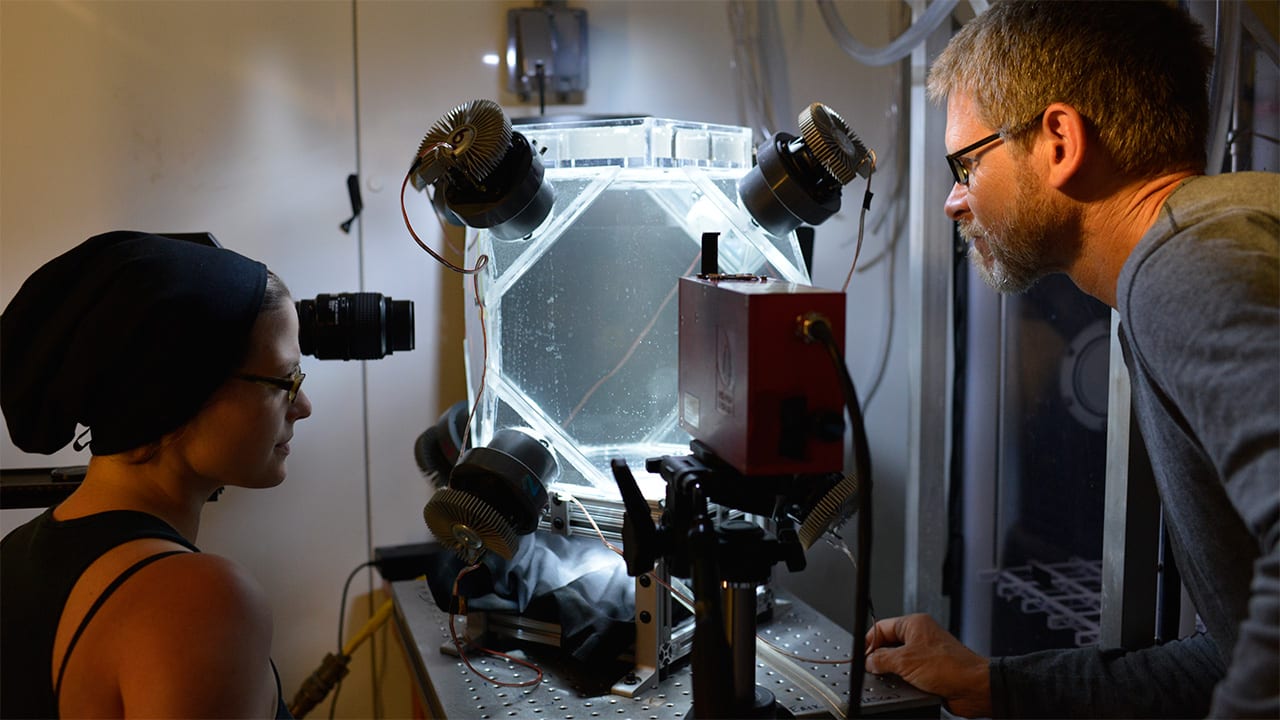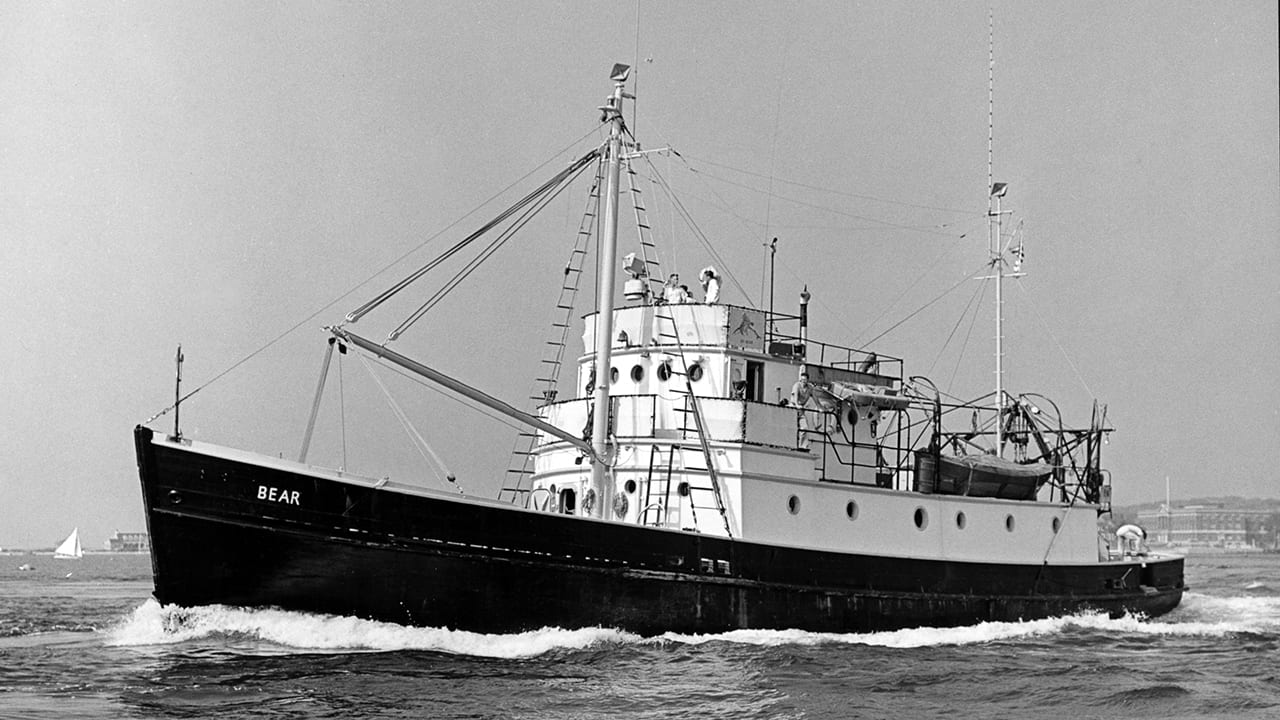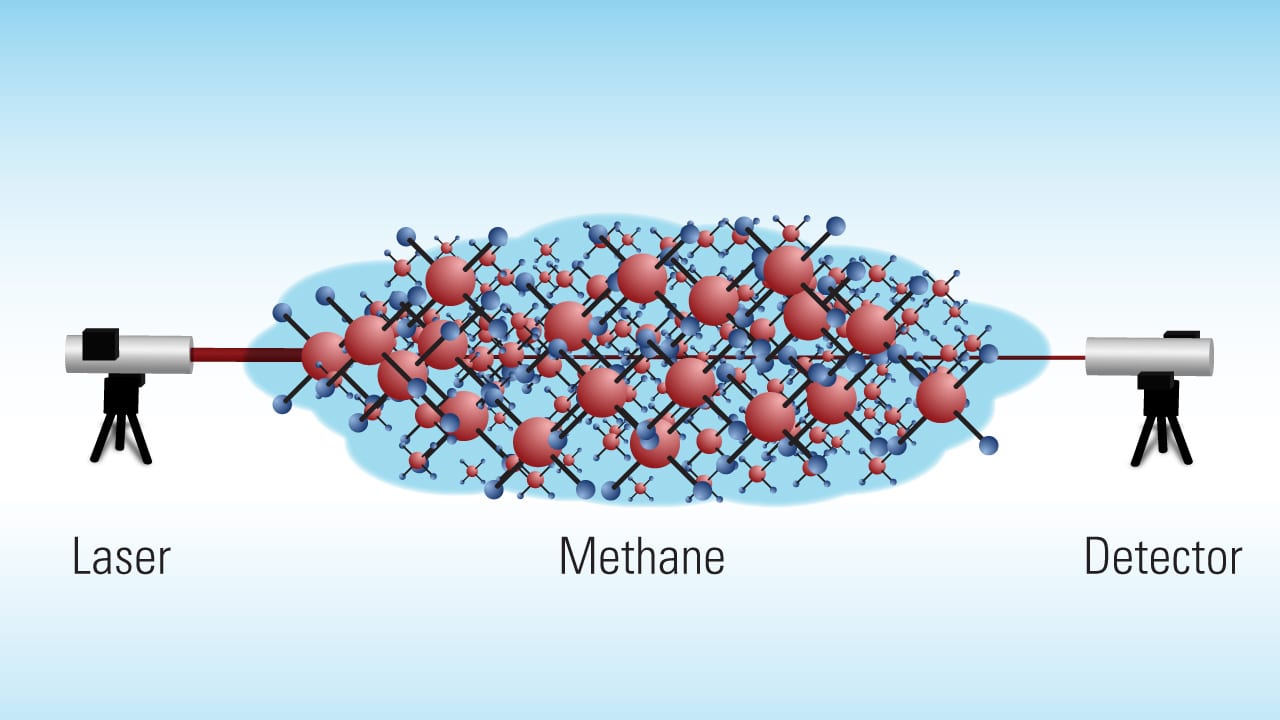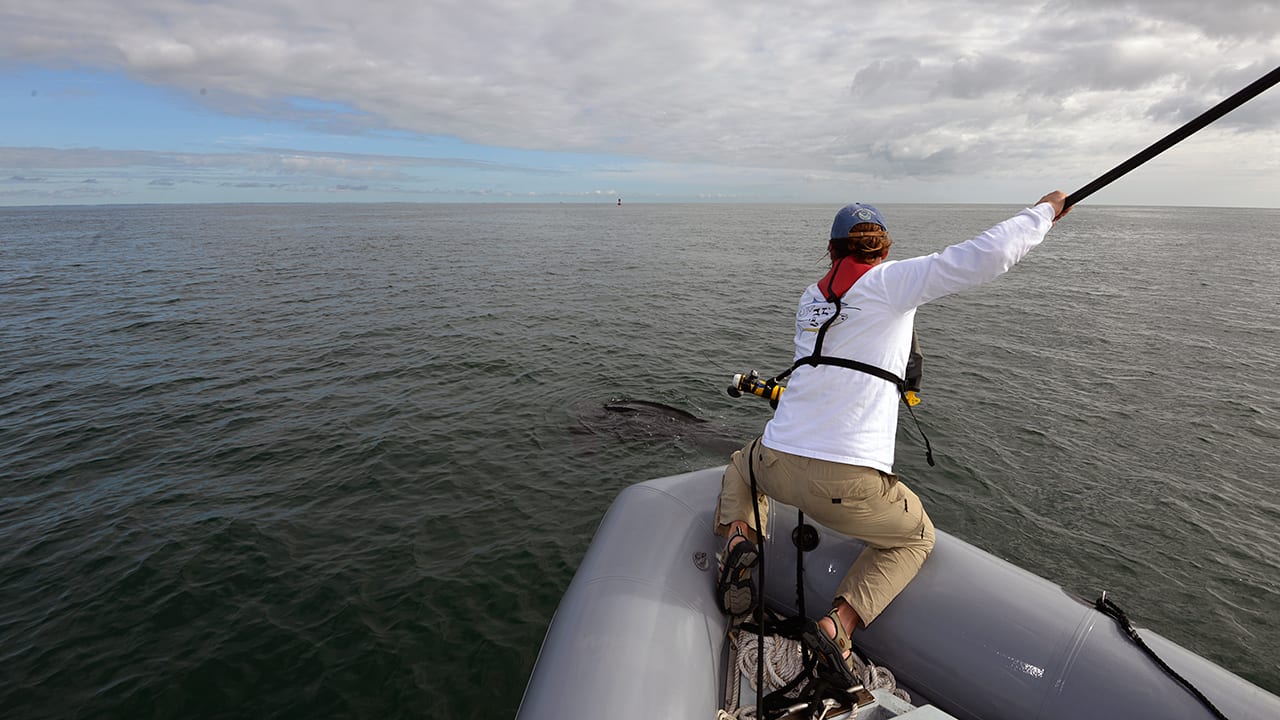Multimedia
Buoy’s Eye View
WHOI engineer John Kemp (center) signals to the winch operator on R/V Neil Armstrong during the recovery of an Offshore Surface Mooring from the Ocean Observatories Initiative’s Coastal Pioneer Array.…
Read MoreAre Reefs Resilient?
Hannah Barkley, a recent graduate of the MIT-WHOI Joint Program, presents her thesis research on coral reef health in the Rock Islands of Palau. Since 2011, Barkley has worked with…
Read MoreSpace-Ocean Connections
Former WHOI Director John Steele presents a model of WHOI’s first research vessel Atlantis to astronauts Woody Spring and Jerry Ross, who flew on NASA’s space shuttle Atlantis in 1986.…
Read MoreWomen Making Waves
The Society for Women in Marine Science (SWMS) held its annual symposium at WHOI in September, with more than 100 women—and a few men—attending the sold-out free event. Speakers described…
Read MoreAutumn’s Arrival
WHOI’s newest ship, the R/V Neil Armstrong, catches the late afternoon light as the harvest moon, the full moon closest to the autumnal equinox, rises above the ship. The state-of-the-art,…
Read MoreAlvin‘s Basket
Every time the submersible Alvin returns to the surface after a mission into the deep sea, a trained team of people, called Alvin swimmers, dive into the water to help…
Read MoreMore Than a Little Bit
Like surgeons laying out scalpels, researchers prepare the bits they will use to drill holes through meters-thick sea ice in the Arctic Ocean. The holes provide access for instruments to…
Read MoreEducation at Sea
The WHOI Summer Student Fellowship (SSF) program and the Woods Hole Partnership Education Program (PEP) bring undergraduates to WHOI each summer to learn more about ocean science through seminars, field…
Read MoreSecuring Knowledge About the Ocean
On a recent visit, Admiral John Richardson (right), the U.S. Chief of Naval Operations, toured a number of the Institution’s science and engineering facilities and heard from researchers about their…
Read MoreThe View from Here
Last August, WHOI hosted a visit by Dr. Tamara Dickinson, the Principal Assistant Director for Environment and Energy at the White House Office of Science and Technology Policy. During her…
Read MoreMaking the Right Connections
WHOI engineering assistant Chris Judge rewires a junction box on the remotely operated vehicle (ROV) Jason. This junction box, or j-box, houses the electrical wiring that connects the ROV’s cameras,…
Read MoreFree Fall
WHOI physical oceanographer John Toole (right) studies some of the ocean’s smallest features in order to better understand its inner workings. Toole, together with Kurt Polzin and an engineering team…
Read MoreSmart Buoy
WHOI biologist Mark Baumgartner has deployed buoys carrying his near real-time whale-listening devices off the coasts of Massachusetts, Maine, and New York. The technology includes software developed by Baumgartner to…
Read MoreSummer River Research
WHOI Summer Student Fellow Stefani Johnson of St. John’s University discussed her poster with scientist Bernhard Peucker-Ehrenbrink in August 2016. Students in the program work with scientists as advisors and…
Read MoreThe Panteleyev Award
MIT-WHOI Joint Program student Melissa Moulton (center) received the 2016 George “Gera” Pavlovich Panteleyev Award from Associate Dean Margaret Tivey and Dean Jim Yoder in June 2016. The award is…
Read MoreNewly Minted Ph.D.s
The June 2016 commencement ceremonies of MIT-WHOI Joint Program included the recipient of the one-thousandth degree awarded since the program was launched in 1967. The milestone was marked by a…
Read MoreWomen at Work
MIT-WHOI Joint Program student Sophie Chu (right) and research assistant Kate Morkeski prepare to measure the movement of dissolved inorganic carbon in a Waquoit Bay salt marsh. In additional to…
Read MoreStorm-tossed Seas
With a storm on the horizon, the ocean is probably the last place you want to put your valuable instruments. Patrick Deane (left) and Sean Whelan did just that, launching an…
Read MoreCasting a Wide Net
In June 2016 R/V Neil Armstrong traveled to the edge and slope of the continental shelf south of Cape Cod. The cruise was part of a series of trips deisgned…
Read MoreSettling In
Oysters and many other bottom-dwelling organisms begin life as free-swimming larvae, drifting in the ocean currents. How and when they decide to settle on the seafloor and grow to adulthood…
Read MoreBear of a Ship
The research vessel Bear was built in Bristol, R.I., in1941 to serve during World War II as a troop carrier in the South Pacific. In 1951, WHOI chartered Bear and purchased…
Read MoreMeasuring Methane
WHOI scientist Anna Michel is developing new ways to measure gases in the air over long distances using a technique called laser spectroscopy. Some of the light from a laser is absorbed by…
Read MoreTag On!
Mike Dodge, husband of marine biologist Kara Dodge, prepares to attach a suction cup-mounted tag to the back of a leatherback sea turtle in waters near Cape Cod recently. Both…
Read MoreMagnetic Attraction
WHOI geologist Maurice Tivey has an unusual speciality: He studies the magnetic properties of rocks. When volcanic magma solidifies, magnetic crystals form in rocks and become oriented in the direction…
Read More
